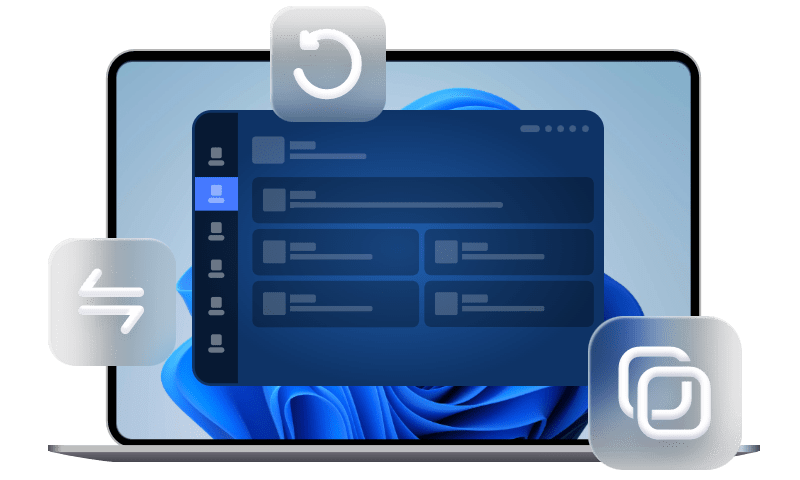How to Fix No Audio Device Installed in Windows 10 Easily
Experiencing no sound on your Windows 10 PC? This guide covers effective solutions to fix “No Audio Output Device is installed”. Check them below.
What causes “No Audio Output Device is installed”?
The “No Audio Output Device is installed” error in Windows 10 typically means your system cannot detect or use your audio hardware. Several factors can trigger this issue:
- Corrupted or Missing Audio Drivers: If your audio driver is outdated, missing, or corrupted, Windows 10 may fail to recognize your sound device.
- Disabled Audio Device in Windows Settings: Your audio device might be disabled in Sound Settings or Device Manager, preventing it from working.
- Faulty or Incompatible Windows Updates: A recent Windows update may have removed, disabled, or replaced your audio drivers with an incompatible version. This can lead to missing devices and sound malfunctions.
- Audio Services Not Running: Windows relies on background services to manage audio functions. If these services are stopped or malfunctioning, your system may fail to detect any audio output device.
- Hardware Issues: Physical problems, such as a faulty sound card, loose connections, or damaged ports, can prevent Windows from detecting audio devices.
To avoid potential data loss or system failures, it is recommended to backup Windows before major updates.
How to fix no audio device is installed in Windows 10
This part will show you how to resolve audio device missing in Windows 10 step by step. Both quick and advanced solutions are included.
Quick fixes:
1. Restart Your Computer
A restart can refresh system processes, reload drivers, and fix temporary glitches that might be causing the audio issue. So start troubleshooting by restarting your computer.
2. Check External Audio Connections
If you’re using external speakers, headphones, or a USB sound card, ensure they are properly connected:
- For wired devices: Unplug and reconnect them firmly. Try using a different port if available.
- For Bluetooth devices: Ensure they are paired correctly and have sufficient battery.
If quick fixes don’t work, try the following advanced fixes:
Fix 1: Run the Windows Audio Troubleshooter
Windows 10 includes a built-in Audio Troubleshooter that can automatically detect and fix common sound problems. Here’s how to use it:
1. Press Win + I to open the Settings window.
2. Click on Update & Security, then select Troubleshoot > Additional troubleshooters.
3. Under Get up and running, select Playing Audio, then click Run the troubleshooter.
4. Windows will scan for audio issues and suggest fixes. If prompted, allow it to apply any recommended changes.
Fix 2: Update audio drivers
Outdated, missing, or corrupted audio drivers can cause the "No Audio Output Device Is Installed" error in Windows 10. Follow these steps to fix it:
1. Press Win + X and select Device Manager.
2. Expand the Sound, video, and game controllers section and see if there is a yellow warning icon around your audio driver (e.g., Realtek High Definition Audio or Intel Display Audio).
3. If there is a yellow warning icon, right-click on the audio device and select Update driver.
4. Choose Search automatically for drivers. If Windows finds an update, follow the on-screen instructions to install it.
5. After updating, restart your computer and check if the issue is resolved.
Fix 3: Enable audio device in Windows Settings
If your audio device is disabled, Windows 10 won’t recognize it. Manually enable the device using the steps below:
1. Press Win + I to open Settings, then go to System > Sound.
2. Under Output, check if a device is listed. If not, scroll down and click Manage sound devices.
3. Find your disabled device under Output devices and select it. Click Enable to activate it.
4. Go back to the Sound menu and set the enabled device as the Default output device if needed.
5. Play a test sound to confirm the fix.
Fix 4: Restart Windows Audio services
If the audio services are stopped or malfunctioning, you may see the "No Audio Output Device Is Installed" error. Follow the instructions below to restore sound functionality:
1. Press Win + R, type services.msc, and hit Enter.
2. Scroll down and locate Windows Audio. Right-click on Windows Audio and select Restart.
3. Locate Windows Audio Endpoint Builder, right-click on it and select Restart.
4. After restarting the audio services, reboot your computer to apply the changes.
Notes:
- If the Restart option is unavailable, select Start instead.
- It is recommended to set audio services to automatic. Right-click each of the services and select Properties > Select Automatic in the Startup type dropdown > Click Apply, then OK to save changes.
Fix 5: Roll back or uninstall Windows updates
Sometimes, a recent Windows update can cause compatibility issues with audio drivers. Rolling back or uninstalling the update might fix the problem:
1. Press Win + I to open Settings, then go to Update & Security > Windows Update.
2. Click View update history, then select Uninstall updates.
3. Look for recent updates, especially cumulative updates or driver updates that coincide with when the issue began.
4. Right-click on the update and click Uninstall. Follow the on-screen instructions and restart your PC.
Bonus: Backup Windows before major updates
Before installing major Windows updates, it’s crucial to back up your system to avoid potential data loss or system failures. Some updates can cause compatibility issues, including the "No Audio Output Device Is Installed" error. A reliable backup ensures you can restore your system if anything goes wrong.
AOMEI Backupper Standard is a free and user-friendly backup tool that allows you to create a full system image before updating Windows.

-
Multiple Backup Types: Select from system, disk, partition, or file backup to suit your specific requirements.
-
Diverse Backup Destinations: Store your backup images on local disks, external hard drives, USB drives, network shares, cloud storage, and more.
-
Customizable Backup Settings: Configure scheduled backups, compress backup images, split large files, and adjust other settings to meet your needs.
Download AOMEI Backupper to try it out! To backup your Windows OS, just click Backup > System Backup and follow the wizard to complete the process.
Verdict
Now you know how to fix no audio device installed in Windows 10. Start with basic solutions like restarting your PC and checking physical connections. If that doesn’t work, try the five advanced solutions offered above.
To prevent similar issues in the future, consider backing up your system before major Windows updates using a reliable tool like AOMEI Backupper Standard. This ensures you can easily restore your system if an update causes problems. What’s more, AOMEI Backupper enables you to replace C drive with SSD. Explore more wonderful features by yourself!

